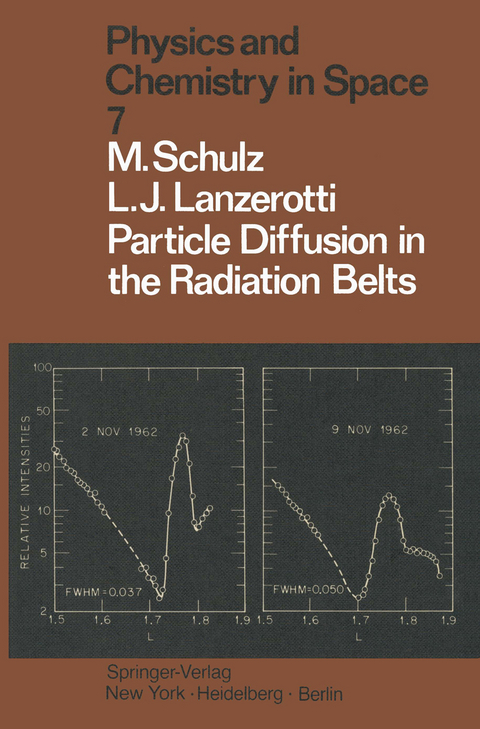
Particle Diffusion in the Radiation Belts
Springer Berlin (Verlag)
978-3-642-65677-4 (ISBN)
I. Adiabatic Invariants and Magnetospheric Models.- I.1 Preliminary Considerations.- I.2 Action-Angle Variables.- I.3 Liouville's Theorem.- I.4 The Dipole Field.- I.5 The Distorted Field.- I.6 Magnetospheric Electric Fields.- I.7 Flux Mapping and Shell Tracing.- II. Pitch-Angle Diffusion.- II.1 Violation of an Adiabatic Invariant.- II.2 Collisions.- II.3 Wave-Particle Interactions.- II.4 Bounce Resonance.- II.5 Cyclotron Resonance.- II.6 Limit on Trapped Flux.- II.7 Weak Diffusion and Strong Diffusion.- III. Radial Diffusion.- III.1 Violation of the Third Invariant.- III.2 Magnetic Impulses.- III.3 Electrostatic Impulses.- III.4 Bounce Resonance.- III.5 Cyclotron Resonance.- III.6 Bohm Diffusion.- III.7 Shell Splitting.- III.8 Diffusion in More Than One Mode.- IV. Prototype Observations.- IV.1 Preliminary Considerations.- IV.2 Decay of Particle Flux (Inner Zone).- IV.3 Decay of Particle Flux (Outer Zone).- IV.4 Statistical Observations.- IV.5 Static Flux Profiles.- IV.6 Time-Varying Flux Profiles.- I V.7 Fluctuating Magnetospheric Fields.- IV.8 Drift Echoes.- V. Methods of Empirical Analysis.- V.1 Basic Objectives.- V.2 Pitch-Angle Eigenmodes.- V.3 Quadrature (Spatial).- V.4 Quadrature (Temporal).- V.5 Variational Method.- V.6 Temporal Integration.- V.7 Spatial Integration.- VI. Summary.- References.- Frequently used Symbols.
| Erscheint lt. Verlag | 18.10.2011 |
|---|---|
| Reihe/Serie | Physics and Chemistry in Space |
| Zusatzinfo | X, 218 p. |
| Verlagsort | Berlin |
| Sprache | englisch |
| Maße | 155 x 235 mm |
| Gewicht | 364 g |
| Themenwelt | Naturwissenschaften ► Physik / Astronomie ► Allgemeines / Lexika |
| Schlagworte | Diffusion • electron • Electrons • Fields • Quadratur • Radiation • Stochastic process • Strahlungsgürtel • Variation |
| ISBN-10 | 3-642-65677-3 / 3642656773 |
| ISBN-13 | 978-3-642-65677-4 / 9783642656774 |
| Zustand | Neuware |
| Haben Sie eine Frage zum Produkt? |
aus dem Bereich


